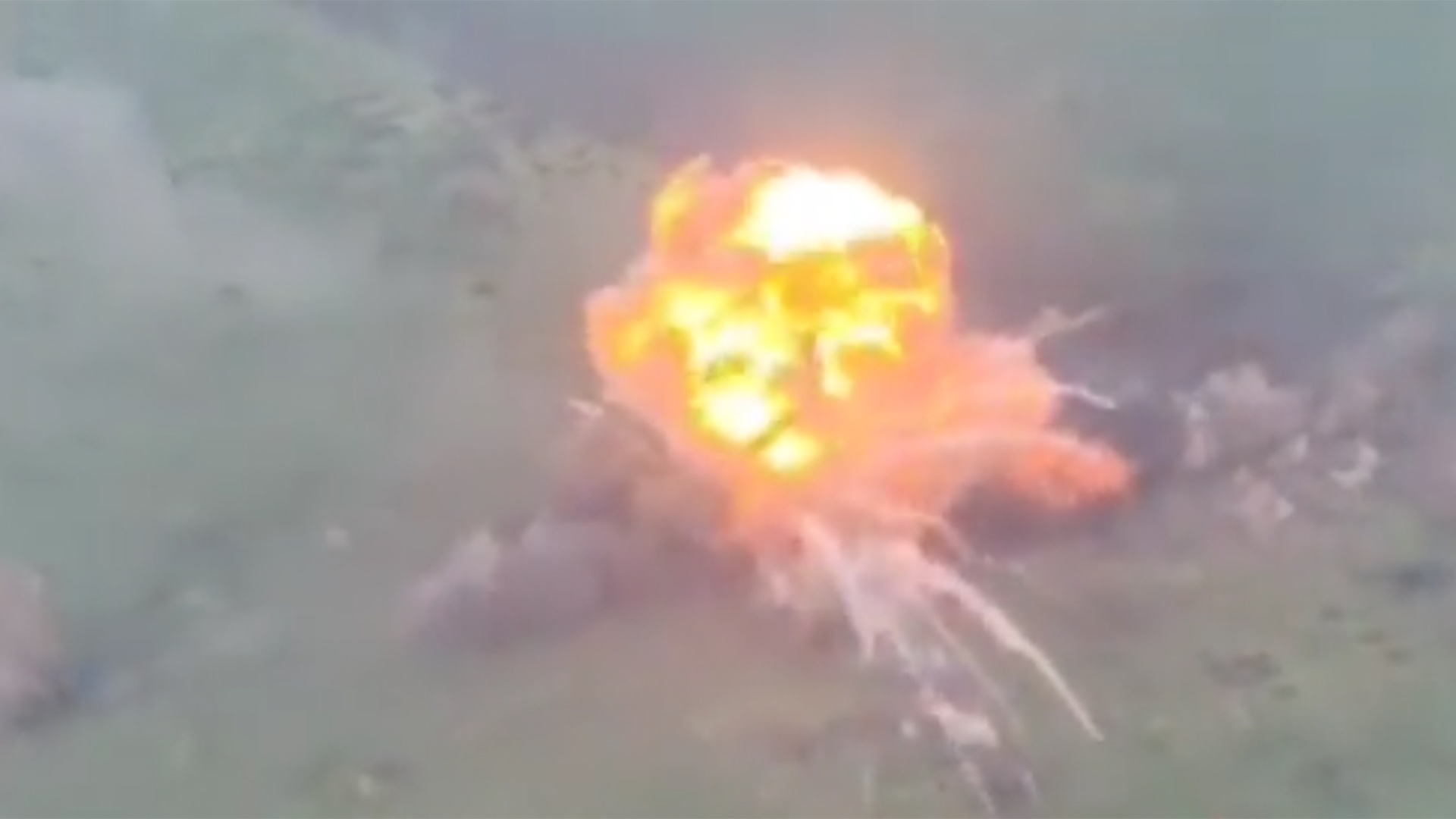

Amid Ukraine’s long-anticipated counteroffensive, Russia is packing old, dilapidated tanks with explosives and sending them on one-way trips toward the Ukrainian front lines as lumbering vehicle-borne improvised explosive devices (VBIEDs).
A video posted on June 18 and claiming to be taken in Donetsk Oblast shows a Russian T-54/55 model tank rolling across a field littered with craters towards what is presumably a Ukrainian position.
The tank is then stopped in its tracks by an explosion, presumably a mine. Disabled, the tank remains smoking for about a minute, until it is struck by what looks like another anti-tank missile or rocket-propelled grenade, and explodes in a massive fireball.
Subscribe to Task & Purpose Today. Get the latest military news and culture in your inbox daily.
As with plenty of combat news emanating from Ukraine, there are plenty of particulars that remain unconfirmed. The incident has been discussed by Russian military bloggers, with one writing, “‘Sending an unmanned kamikaze tank filled with six tons of TNT to Ukrainian positions in Mariinka. Unfortunately, he didn’t make it, blown up by a mine.’”
Russia’s Ministry of Defense claimed over the weekend that a remotely controlled tank filled with “about 3.5 tons of TNT and 5 FAB-100 bombs” had destroyed a Ukrainian battlefield position.
Elsewhere, Russian state media organization RIA Novosti reported on a seemingly similar incident, although it identified the VBIED as an MT-LB armored personnel carrier rather than a tank that was first introduced more than 70 years ago. A Russian tank commander identified only by the call sign “Barnaul” described a soldier driving the vehicle to within 300 meters of Ukrainian positions, setting it on manual gas, and then bailing out of the vehicle, at which point “Barnaul” detonated the explosives via remote control.
Setting aside the spin, though, it appears Russia is using armored vehicles – including T-54/T55 tanks – as VBIEDs.
When the first images of T-54/55 tanks emerging from storage and depots appeared in March, there was plenty of speculation about what, if any, purpose they could serve on a modern battlefield. After all, it’s a tank that was first manufactured in 1948, and even the newest variants began entering service in 1958.
Apparently, that purpose very well may be going out with a bang as an improvised bomb.
The latest on Task & Purpose
- Is Ukraine winning the war against Russia?
- Air Force sends F-22s to Middle East to deter aggressive Russian pilots
- Army secretary concerned ‘woke military’ criticism could hurt the service
- Fort Sill commander fired amid investigation
- Fort Polk is renamed Fort Johnson
